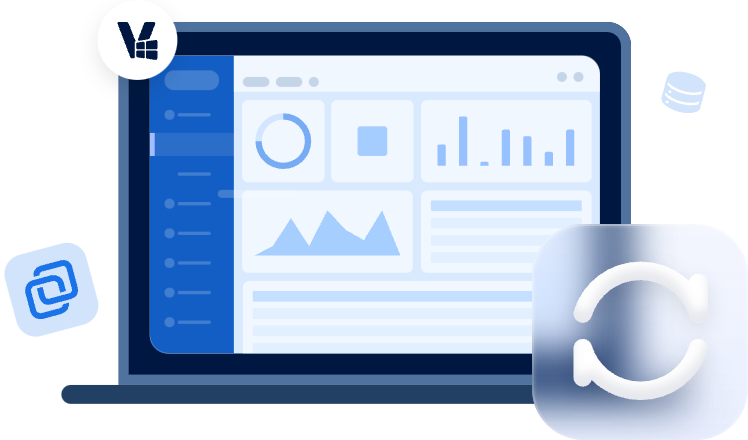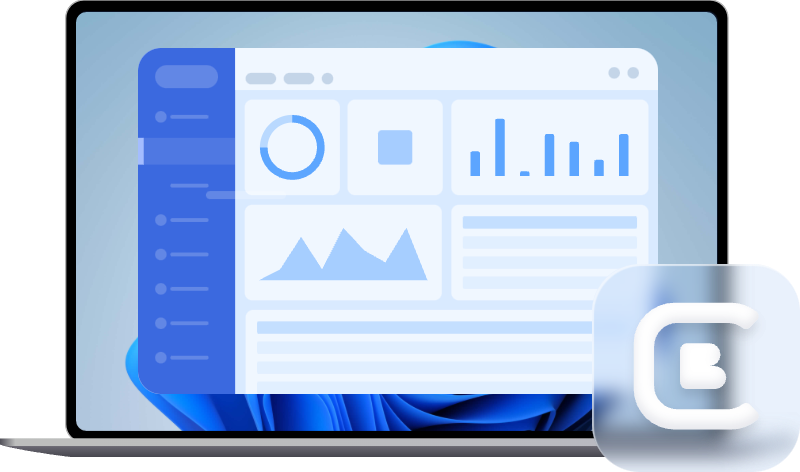What Is the Difference Between VMware Horizon and VDI?
What is the difference between VMware Horizon and VDI? This guide explains their key features and differences. Also, it is crucial to back up your VMware virtual machines.
As businesses transition to remote work and digital transformation, virtual desktop solutions have become essential. Two commonly discussed technologies in this space are VMware Horizon and Virtual Desktop Infrastructure (VDI).
While VMware Horizon is a specific product, VDI is a broader concept encompassing multiple solutions. This guide breaks down their differences, functionalities, and ideal use cases to help you make an informed decision.
VMware Horizon VS Microsoft VDI Overview
What is VMware Horizon?
VMware Horizon is a specific VDI solution developed by VMware. It enables organizations to deploy, manage, and optimize virtual desktops and applications through a centralized interface. VMware Horizon is a product that leverages the broader concept of VDI to provide an enhanced experience.
Key Features of VMware Horizon:
- Built-in Security: Advanced authentication and encryption for secure remote access.
- Multi-Platform Support: Works on Windows, macOS, Linux, iOS, and Android.
- Scalability: Designed for enterprises that need to scale virtual desktops easily.
- Seamless Integration: Optimized for VMware environments and other cloud services.
What is VDI?
Virtual Desktop Infrastructure (VDI) is a desktop virtualization technology that hosts desktop environments on a centralized server. These virtual desktops are delivered to end-users over a network, allowing them to access their workspace from any device.
Key Features of VDI:
- Centralized Management: IT teams can control all virtual desktops from a single platform.
- Security: Sensitive data remains on the server, reducing security risks.
- Flexibility: Users can log in from anywhere without relying on a specific device.
- Customization: Different users can have unique desktop environments based on their needs.
Differences Between VMware Horizon and VDI
| Feature | VMware Horizon | VDI (General Concept) |
|---|---|---|
| Definition | A specific VDI solution developed by VMware | A broad concept of desktop virtualization |
| Management | Managed through VMware’s proprietary tools | Managed using various VDI solutions (Citrix, Microsoft, etc.) |
| Security | Includes built-in encryption, multi-factor authentication, and Zero Trust security | Security features depend on the VDI provider and configuration |
| Integration | Fully optimized for VMware products like vSphere and vSAN | Can integrate with multiple providers but requires additional setup |
| Deployment | Supports on-premises, hybrid, and cloud environments | Deployment varies by VDI provider and infrastructure setup |
| Cost | License-based pricing with additional costs for cloud and advanced features | Costs vary depending on the provider and implementation |
| Scalability | High scalability with automation and cloud-native capabilities | Scalability depends on chosen VDI provider and IT resources |
| Performance | Optimized for high-performance workloads, including GPU-accelerated tasks | Performance depends on hardware, virtualization platform, and network setup |
| User Experience | Optimized for remote access with high-quality streaming protocols | Varies depending on the VDI solution and configuration |
| Flexibility | Best suited for organizations using VMware ecosystems | Can be deployed using multiple solutions based on business needs |
Importance of Data Backup with AOMEI Cyber Backup
As businesses rely more on virtual desktops, ensuring data protection becomes crucial. AOMEI Cyber Backup is a comprehensive backup solution that protects workloads across various environments, including VMware virtual machines.
With its user-friendly interface, AOMEI Cyber Backup simplifies backup management while delivering powerful features. It not only excels in data protection but also ensures fast and seamless recovery, enabling users to restore their virtual assets effortlessly.
How to Backup VMware Virtual Machines for Free
Step 1: Open AOMEI Cyber Backup Console, go to Source Device > VMware > + Add VMware Device, enter the Device and User Information, then click Confirm.
Step 2: Navigate to Backup Task > + Create New Task and configure the following settings:
- Task Name: Set a name for easy identification.
- Backup Type: Select VMware ESXi Backup.
- Device: Cover multiple VMs within a single backup task.
- Target: Choose a local or network path to store backups.
- Schedule: Automate backups with full, differential, or incremental backup options.
- Archive: Add Amazon Object Storage for cloud-based backup storage.
Step 3: Click Start Backup and choose: “Add the schedule and start backup now” or “Add the schedule only” to automate future backups.
🥇 While the free version covers essential backup needs, upgrade to the Premium edition unlocks additional features, including:
- Backup Cleanup: Automatically delete old backups to save storage.
- Batch VM Backup: Back up multiple VMs managed by vCenter Server or standalone ESXi hosts in one task.
- Restore to a New Location: Quickly create a new VM from the backup without manual reconfiguration.
Summary
While VDI is a general technology for virtual desktop deployment, VMware Horizon is a specific solution built on VDI principles. The best choice depends on your business requirements, existing IT infrastructure, and budget.
VMware Horizon is ideal for organizations looking for an integrated, secure, and scalable solution, while VDI offers broader flexibility with multiple provider options.
By integrating solutions like AOMEI Cyber Backup, businesses can enhance their virtual desktop infrastructure while ensuring data protection and disaster recovery.
FAQs
1. Is VMware Horizon the same as VDI?
No, VMware Horizon is a specific VDI solution. VDI is a general concept, while VMware Horizon is one of the leading products in this category.
2. Does VMware Horizon require additional hardware?
VMware Horizon can be deployed on existing virtualized infrastructure but may require additional server resources for optimal performance.
3. What are some alternatives to VMware Horizon?
Citrix Virtual Apps and Desktops, Microsoft Azure Virtual Desktop, and Amazon WorkSpaces are popular alternatives.
4. Can VMware Horizon work with non-VMware environments?
While it is optimized for VMware, VMware Horizon can integrate with some third-party platforms but works best within a VMware ecosystem.
5. Is VDI only for large enterprises?
No, VDI solutions can be scaled to fit small businesses, mid-sized companies, and large enterprises, depending on the deployment strategy.






